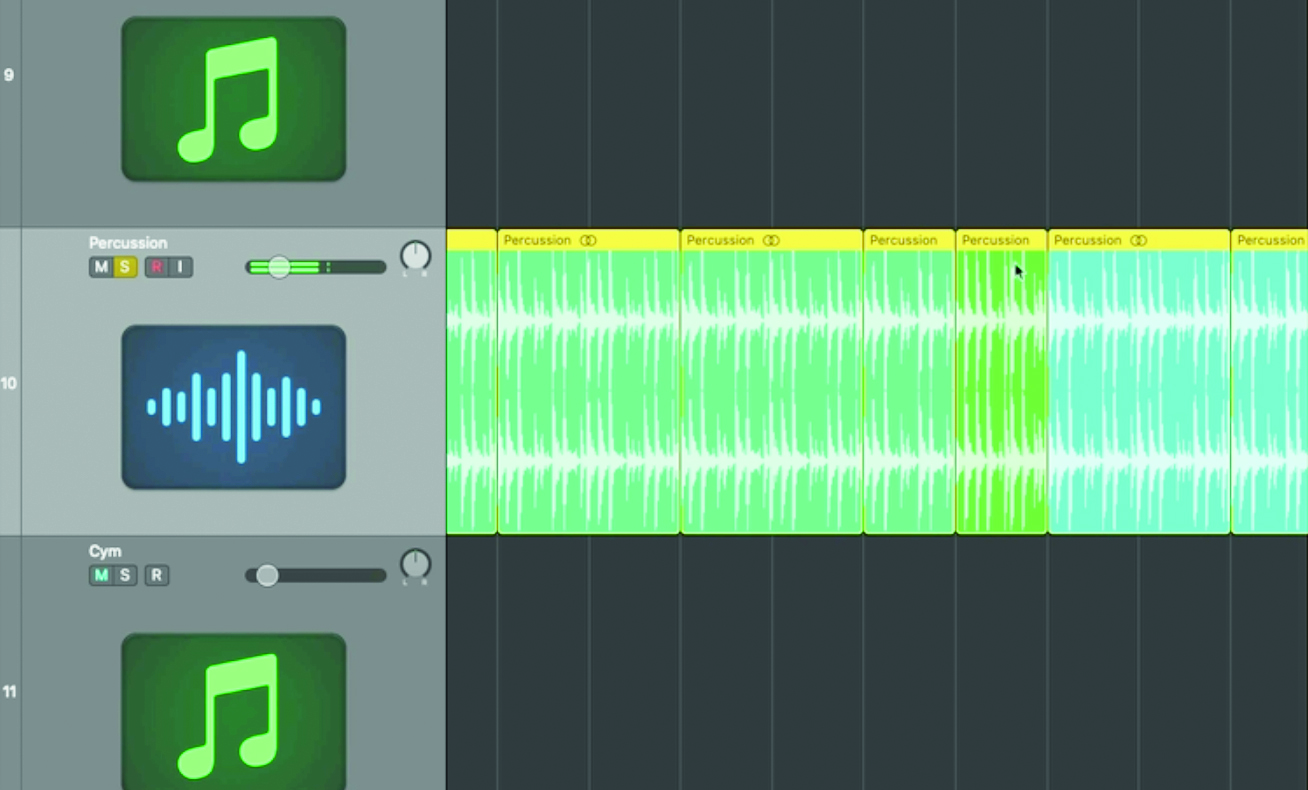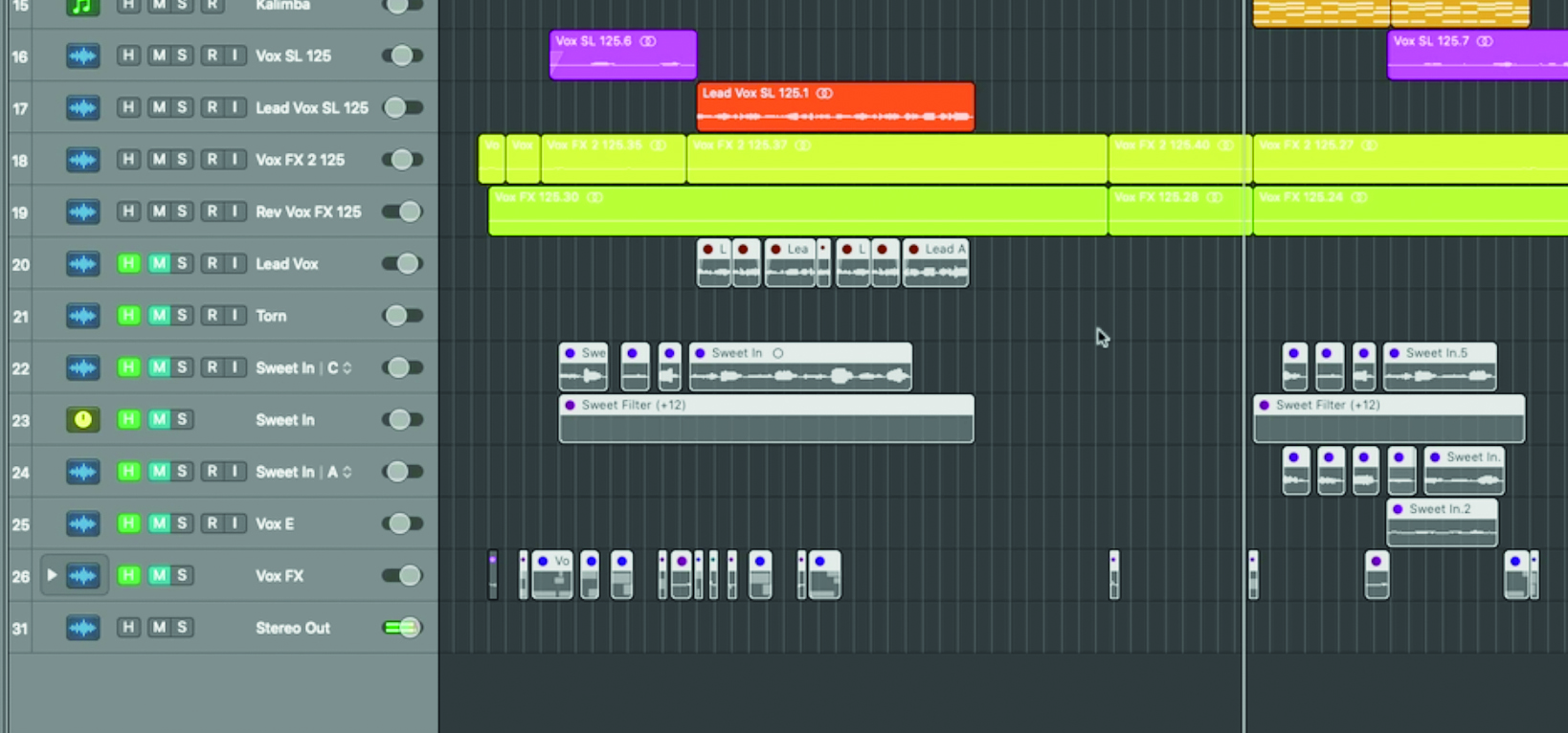The Track: Cypherpunx & Luke Brancaccio on the making of Sore Lullaby
Future Music heads to Brighton Music Conference for a live instalment of The Track that sees three talented producers open up their DAW and dig deep into the making of a recent release

Having spent far too much time shut in our home offices over the past 18 months, FM jumped at the chance to get back out amongst ‘real’ people at last month’s Brighton Music Conference.
While we were there we sat down with local producers Cypherpunx – aka Tim Belcher and Douglas Horner, also known as Flip Fantazia – and their regular production partner Luke Brancaccio. In a rare ‘live’ instalment of The Track, the three producers took us through the creation of their progressive vocal house cut, Sore Lullaby, and its Massive Attack-inspired downtempo version, which appeared on John Digweed’s 2020 compilation album Quattro.
How did the three of you come to work together?
TB: “I knew these guys when DJing under the name Timo Garcia back in London about 20 years ago. I moved down here ten years ago and bumped into Doug who was walking his dog on the beach. It was literally right by my studio, so he just came in and had a little jam session. I was writing a lot of dance music for various different labels. A project came up for a TV sync project through Ninja Tune, so we started writing a load of tracks for that.
"We wrote probably about 20 tracks in total that we signed to Ninja Tune’s sync company and a few others. Then we kept back another 17 tracks that we’d written to put out as an album ourselves. I was going to self release that on a label I’d started myself. Then I saw how much it costs to create a double vinyl record these days, and we cut it down to ten tracks and signed the other seven off to other sync companies.
I use an imperfect cadence and a harmonic cadence blended together to get a mix of discordance and harmony. That’s where the title Sore Lullaby came from
“We did that under the name Flip Fantazia, but also as we were writing those tracks we started writing some more house and techno stuff, and those tracks we started signing to labels like Crosstown Rebels and Bedrock as Cypherpunx. The first of those was this collaboration we did with Luke.”
Sore Lullaby is particularly interesting because you’ve done a few versions, right?
Want all the hottest music and gear news, reviews, deals, features and more, direct to your inbox? Sign up here.
LB: “Yeah, we did a downtempo version where we massively listened to Massive Attack beforehand.”
TB: “We nicked their snare (we didn’t really!).”
LB: “The original release was two tracks, Tears and Lies, which was us really channelling our inner Radiohead, then this was the b-side, which sounds quite like Muse.”
Pigments is really amazing. It’s definitely saved a good few of our tunes
Where did the original inspiration for the track come from?
LB: “We’ll never get to remix a Radiohead tune, so we thought we’d take it upon ourselves to do something in ode to them. We all come from such different backgrounds, not just dance music – I’ve been in a rock band before, so have the other guys. We’ve got so many different influences that when we go into the studio it’s a case of, ‘OK, what are we in the mood for today?’.”
TB: “This one actually started life as a demo that Doug wrote back when he was in a rock band.”
DH: “The original employed the use of sublimation – trying to find some beauty in something that’s not necessarily aesthetically pleasing. I use an imperfect cadence and a harmonic cadence blended together to get a mix of discordance and harmony. That’s where the title Sore Lullaby came from. The first version was just a sketch really, a melancholic guitar part with a vocal over it. Then I created a version with a three-piece band I play with. We did a live recording of the same idea and I chucked some keyboards on it afterwards. It became a more synth-rock kind of thing.”
So how did you approach turning those demos into the more electronic version of the track?
LB: “Tim and I started writing a dance tune, which took us ages to come up with. We must have spent almost 48 hours on this one project, then I got to the stage of saying ‘OK, I think we should bin this’. That was really hard for Tim, who was doing all the work and engineering it, while I was just sitting on the couch behind him! But then Doug came in and what he had fit perfectly.”
TB: “After we’d got the rough sketch down, Doug came in and did the vocals again and played the chords in. We already had this arpeggiator thing going on, which is the lead riff, essentially. Doug just added the chords over that and re-recorded the vocals.”
TB: “We’ve added a little bit of white noise texture to it too, which rises up [as the track progresses]. You can just hear a little bit of it on top of the synth as it builds. Then there’s just a little bit of sidechain compression around the kick to give it a little pumping feel. That’s it though, there’s not a lot going on. Pigments is so complex in itself you don’t need to layer it up."
What did you use to create the lead arp line?
TB: “That was the element that turned it around and stopped us from binning it. The arp comes from the [Arturia] Pigments synth. There’s a lot of automation on this track, the main thing you can hear is a tremolo effect. Within the track it really gives it a twist.”
LB: “Pigments is really amazing. It’s definitely saved a good few of our tunes.”
Creating Sore Lullaby's downtempo version

Step 1: The inspiration for the downtempo version started with the snare, which is inspired by listening to classic Massive Attack records. “[Luke and I] listened to the vocals and synths on their own and looked at each other and both said ‘that’s Massive Attack’. So we listened to a few of their tracks and singled out a snare sound, then built it from that sound.”

Step 2: The laidback flavour is added to with a sampled drum loop. “This comes from a jazz sample. I think it was a 170bpm drum loop that’s slowed right down. That’s why this track was really easy to make, it was basically a kick, snare and hi-hat loop.”

Step 3: The melodic synth riffs and vocals are carried over in full from the house version. “I noticed when I opened this project that I’ve muted and hidden a load of vocal parts too, so there must have been a point where we were going to use more vocals but decided against it.”

Step 4: “The bass is different, although we’re still using the same TAL Juno-60 replica. It’s the same bass sound used on the original version, but we’ve replayed it differently. Other than that it’s just the drums and the tempo that have changed.”

Step 5: The vocal is the same recording, but slowed down drastically in BPM. “It fit perfectly. I used Logic to do it. I tried with Melodyne but gave up with that in the end. I worked so fast with Logic’s Flex Pitch. It needed quite a bit of shifting about because the new rhythm is quite heavily swung, so I just grab the vocal hits to move them.”
Cypherpunx & Luke Brancaccio's Tears + Lies EP is out now on Crosstown Rebels.


Future Music is the number one magazine for today's producers. Packed with technique and technology we'll help you make great new music. All-access artist interviews, in-depth gear reviews, essential production tutorials and much more. Every marvellous monthly edition features reliable reviews of the latest and greatest hardware and software technology and techniques, unparalleled advice, in-depth interviews, sensational free samples and so much more to improve the experience and outcome of your music-making.
